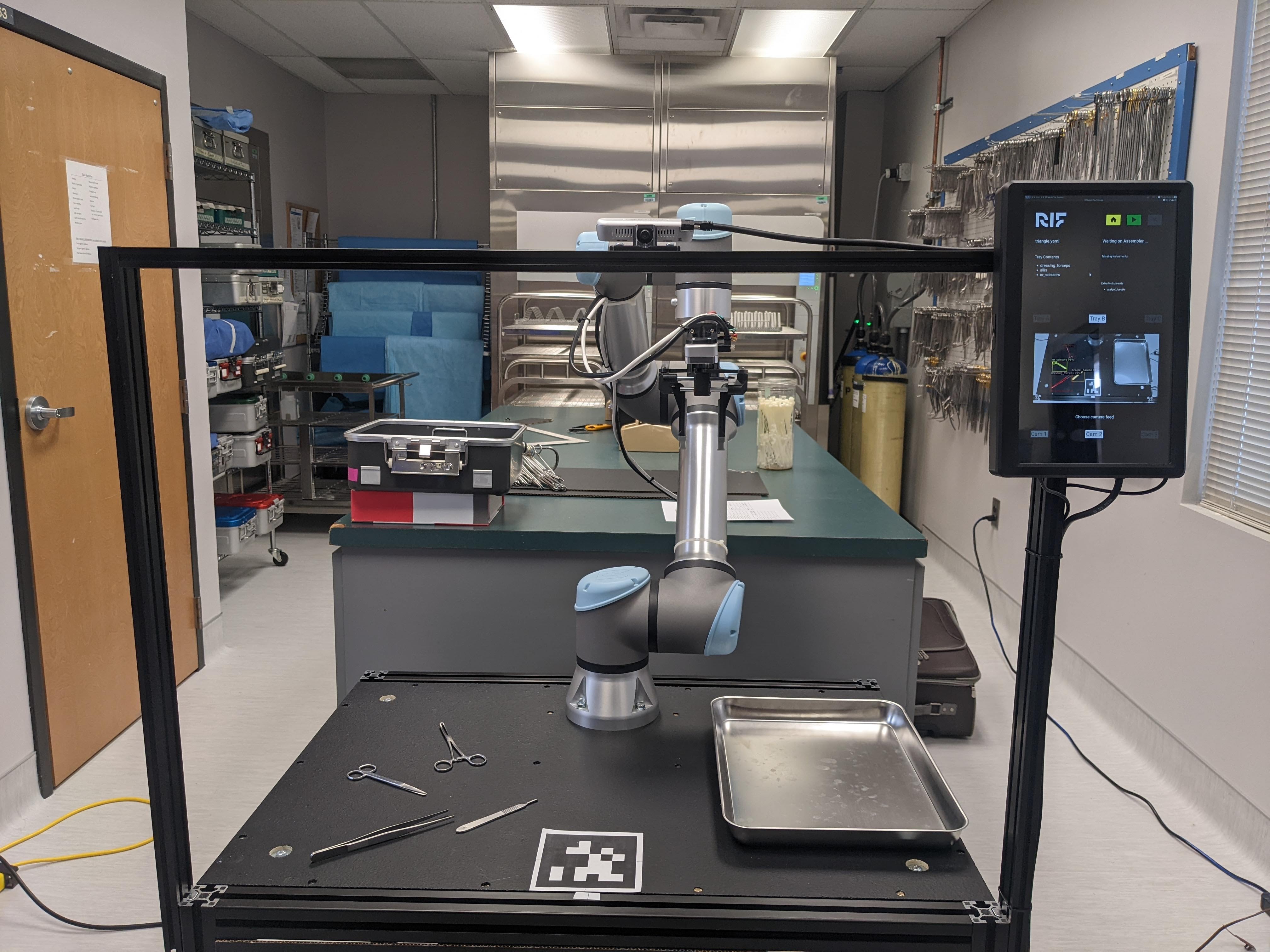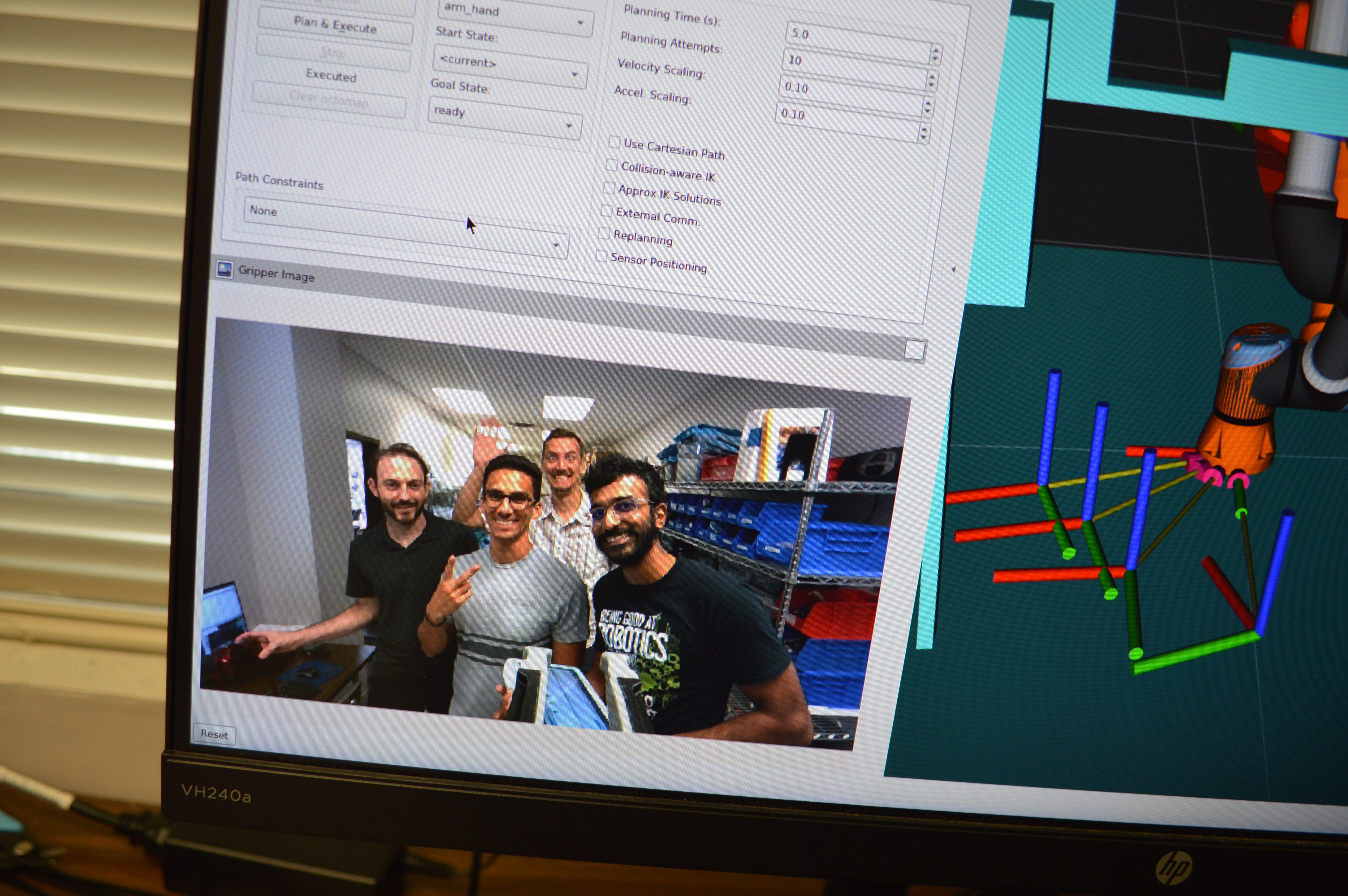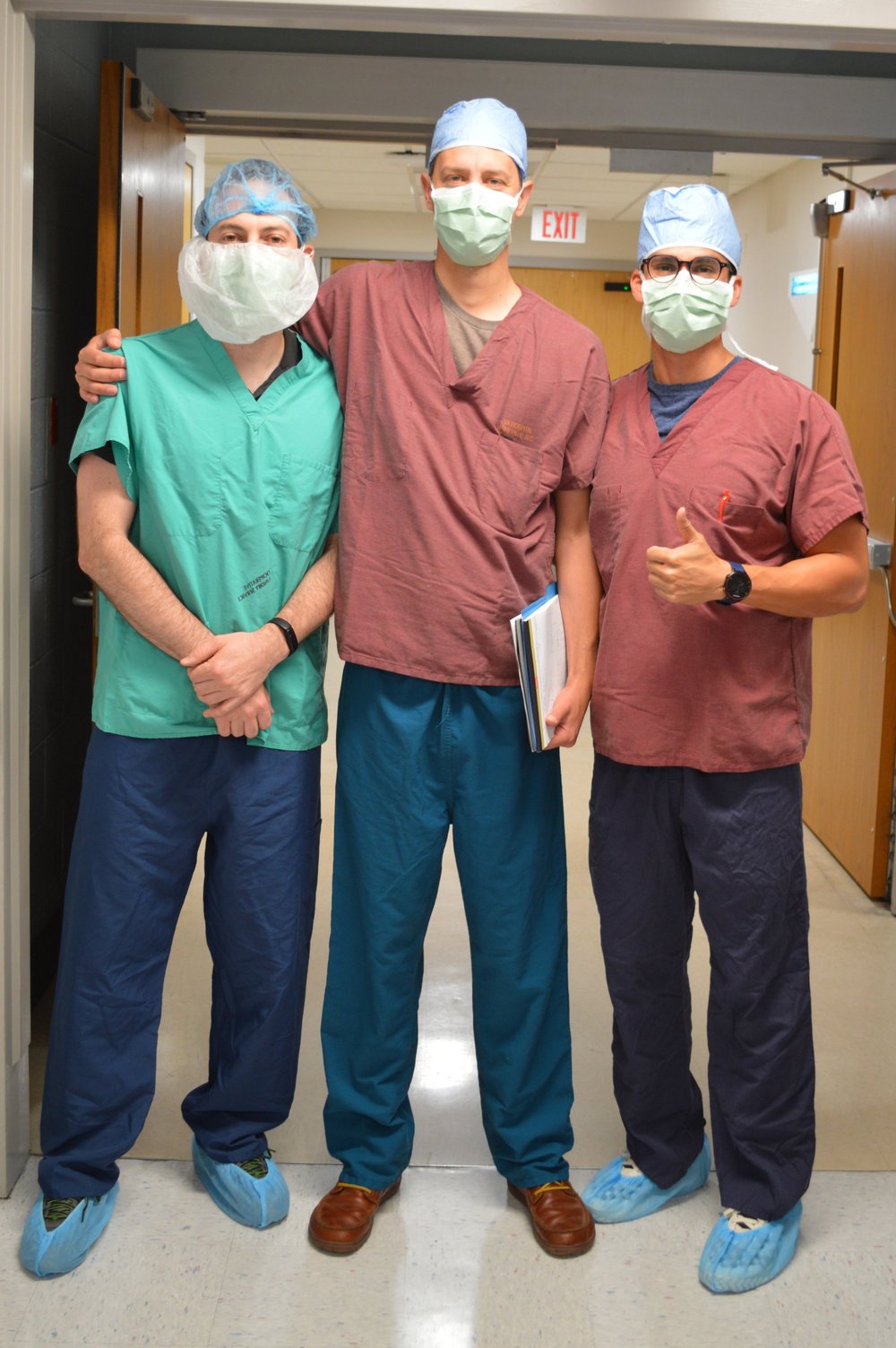
Several years ago, Kevin DeMarco’s aunt was an operating room nurse who asked DeMarco — knowing that he programmed robots for a living — if there was a robot that could prepare surgical equipment. After investigating the problem with a colleague at Georgia Tech, where DeMarco was working as a research faculty member, he decided to leave his position to create the robot that his aunt once mused about.
In this quest, DeMarco ended up co-founding RIF Robotics, one of the startups in the TechCrunch Disrupt Battlefield 200. Led by DeMarco, Sergio García-Vergara and a third co-founder, Collin Farill, who’s an industrial designer by trade, RIF Robotics seeks to use a combination of AI and robotics to relieve healthcare workers of the burden of mundane tasks so they can focus on clinical work.

Image Credits: RIF Robotics
Sterile processing — the cleaning of medical equipment — is also tough on technicians performing it, who have to spend hours each day inspecting and cleaning tools. Some equipment requires over 100 steps to disinfect, and the pace in busy hospitals can be relentless.
The costs can add up, too. One study estimates that just 20 instrument errors that end up creating delays in the operating room can cost a hospital as much as $3,385. Extrapolating out to a year, the cost to the hospital would be about $48,000, the research found.
RIF isn’t tackling cleaning. But the startup claims its prototype product, which was developed in less than two months, can save surgeons time by identifying, classifying and manipulating four different instruments and assembling a small surgical tray. Two machine learning systems — an image segmentation system and an object classifier, trained on sets of both real and synthetic images of surgical tools — help a robotic manipulator arm grasp and move the instruments.
“The major challenges that the sterile processing industry is facing are a lack of experienced surgical technicians, instrument-level tracking, infection traceability and cost traceability,” DeMarco told TechCrunch in an interview. “Medical device manufacturers are interested in knowing how their equipment is used and degrades in the field. Instrument-level data will also help them to decide where to send sales reps. Hospitals are interested in instrument-level data because it will help them operate more efficiently by improving instrument-level tracking and instrument inspection. Currently, most hospitals only track at the tray level, but the industry wants to be able to track at the instrument level.”

Image Credits: RIF Robotics
Future prototypes will be able to recognize more tools and determine if there’s any leftover “bioburden” (i.e., blood and bone) on instrument surfaces and evaluate instruments’ sharpness and overall condition. But even in its current form, DeMarco believes that RIF has built a product hospitals would use.
“Three Atlanta hospitals and the Veterans Affairs are interested in our product,” he said. “We have a collaborative research and development agreement with the Veterans Affairs, which allows us to conduct customer discovery and pilot studies at their facilities … [We’ll deploy] three alpha versions of our systems at local Atlanta hospitals, where we already have existing connections.”
RIF is currently bootstrapping — DeMarco claims that the company has a burn rate of less than $1,000 per month. But the team isn’t naïve about the long road ahead. RIF is going after an $800,000 debt pre-seed round and hopes to hire a medical device industry expert after the round concludes. The company, which is pre-revenue, also expects to require three rounds of funding and close to four years before it reaches profitability.

RIF Robotics’ co-founders pose for a photograph in scrubs. Image Credits: RIF Robotics
There’s also competition from vendors like RST Automation, which sells a semi-automated medical tool identification and organization system. Steris and R-Solution Medical — two other rivals, albeit not direct ones — are developing robots to transport and store surgical trays and equipment.
DeMarco claims that RIF’s solution is more capable. But the proof will be in the pudding — RIF aims to turn its prototype into a manufacturable product by fall 2023.
“The healthcare industry is starving for innovation,” DeMarco said. “We are protecting ourselves from the potential headwinds by developing products and solutions that are directly asked for by the industry and the end users.”
RIF Robotics powers robots that inspect and organize surgical equipment by Kyle Wiggers originally published on TechCrunch




0 Comments